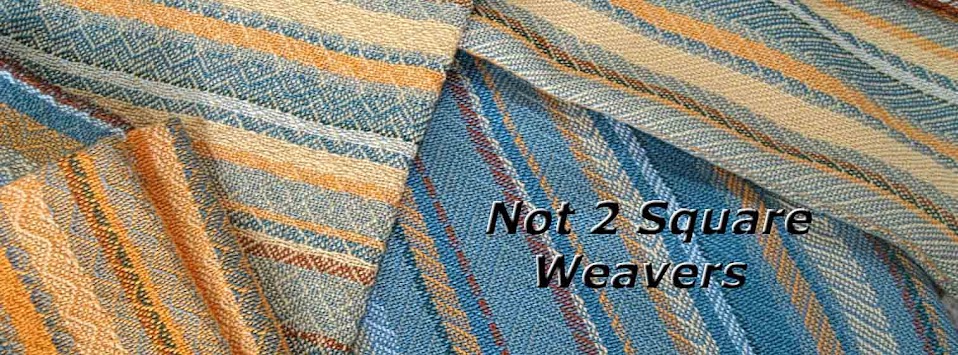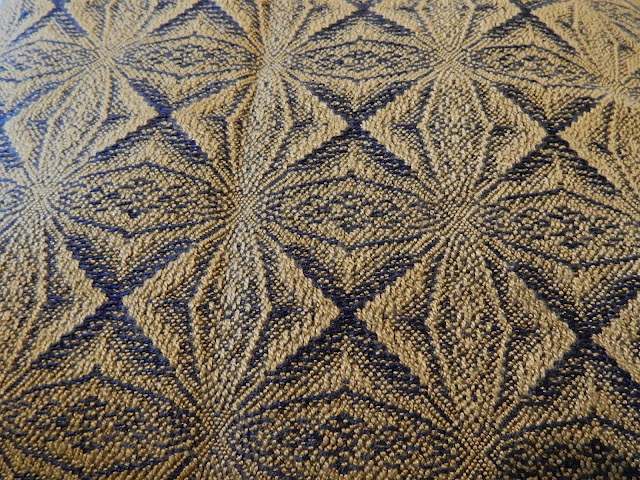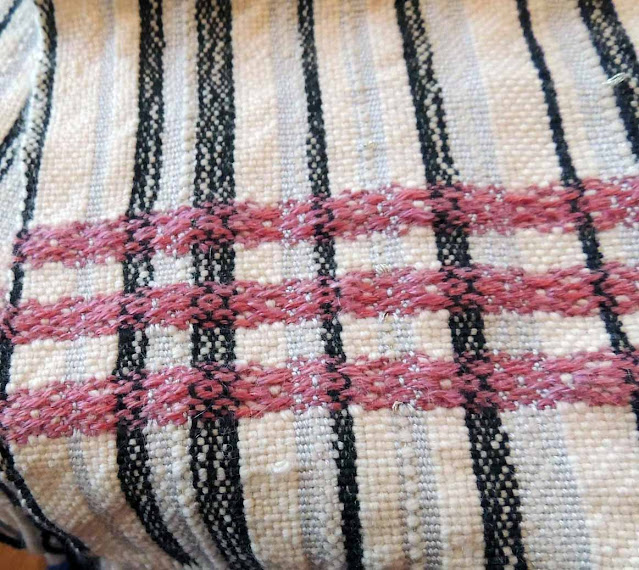--Color: Purple
--Color relation: Monochromatic contrast
--Pattern/Structure: Summer & Winter
--Yarn: Ribbon
--Design element: Border
Sarah H. Jackson’s design for “Four Blocks on Four Shafts:
Summer & Winter Towels” (Handwoven,
May/June 2013) was the inspiration for this piece. Some unusual things about
her design are:
1) Both the pattern and the tabby weft are the same grist.
Normally, pattern yarn is slightly thicker in Summer & Winter.
2) The pattern and tabby colors change every inch or so,
together with the treadling. The effect is a complex interaction of three
colors (warp, pattern, tabby) as well as the interaction of the different
blocks.
3) She {Sarah} manages to obtain 4 pattern blocks on 4 shafts, and
still preserve the tabby ground.
It is a complex design, and at moments I felt like a pianist
trying to play 3/4 time with my right hand and 4/4 time with my left – a real
mind boggle.
 |
| Threading |
Like Diana, I did not want to buy more yarn. I had a drawer
full of various 10/2 purple cotton, but no 8/2 purples. So I reconfigured
Jackson’s design, which calls for 8/2 cotton sett at 18 epi, into 10/2 cotton
sett at 24 epi. To restore width lost by the denser sett, I added 12 ends to
each of the six warp colors, and repeated each of the 4-thread units six times
rather than five.
It was hard to predict how the colors would work together,
so I just grouped the rosier purples on one side and the bluer purples on the
other side. In retrospect, I wonder if the white warp would look better on an
edge rather in the center, where it tends to bisect the towel.
 |
| Purple Summer & Winter Towels |
How was I going to add ribbon and border? At this point, I
considered dropping those, and just showing up with a “three of a kind” poker
hand. But eventually it dawned on me to use the ribbon as a loop to hang the
towel on a drawer knob. The ribbon also provided a border. The loop added a
little zing.
 |
| Towel Detail |
 |
| Towel Detail |
 |
| Towel Detail |
 |
| Use of Ribbon |
I’m glad the Weaver’s Poker challenged me to stretch beyond my
usual thinking.
























